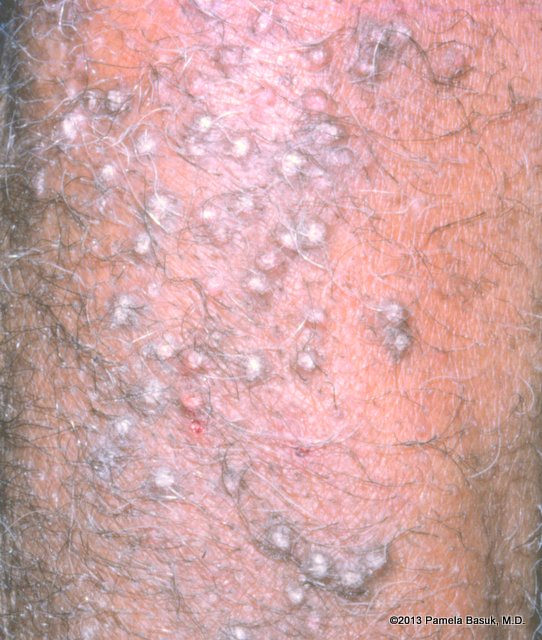Lichen planus is a skin condition affecting about one to two percent of the population, and typically occurs on the wrists, ankles, lower back, oral cavity, genitals, nails, and scalp. The lesions of lichen planus resemble shiny, flat-topped, firm papules (bumps) varying from pin point size to larger lesions and are usually purple in color and itchy. The rash can come and go, but is usually chronic. It is not contagious. Its cause is unknown, and there is no cure, so treatment focuses on relieving the symptoms: itchiness and appearance.
While the classical form appears on the wrists and ankles, there are different forms of lichen planus:
- When it occurs in the mouth, it is called oral lichen planus and appears most commonly on the insides of the cheeks, gums, and tongue. Oral lichen planus can be white lacy streaks, fluid-filled blisters, or painful sores or ulcers. One in five patients with the oral form also have lichen planus elsewhere on the skin.
- Other forms of lichen planus can occur in the genital area, nails, and scalp. About 25% of patients with lichen planus of the nails also have skin involvement.
While the cause of lichen planus is unknown, lichen planus-type rashes can occur as an allergic reaction to medications for high blood pressure, heart disease or arthritis. In those cases, treatment may include reduction or removal of the associated medication. Rarely lichen planus is associated with a hepatitis C viral infection. Reactions to dental amalgam fillings can be responsible for oral lesions of lichen planus; studies have shown that these lesions resolve after the fillings are replaced with another material.
Diagnosis is usually made without a skin biopsy, but in some cases the presentation may not be typical and a small piece of skin (biopsy) may be required for a diagnosis.
Treatments vary:
- topical creams or ointments to the lesions
- injections into the lesions
- oral medications
Lesions of lichen planus usually last a few years and may resolve on their own.


